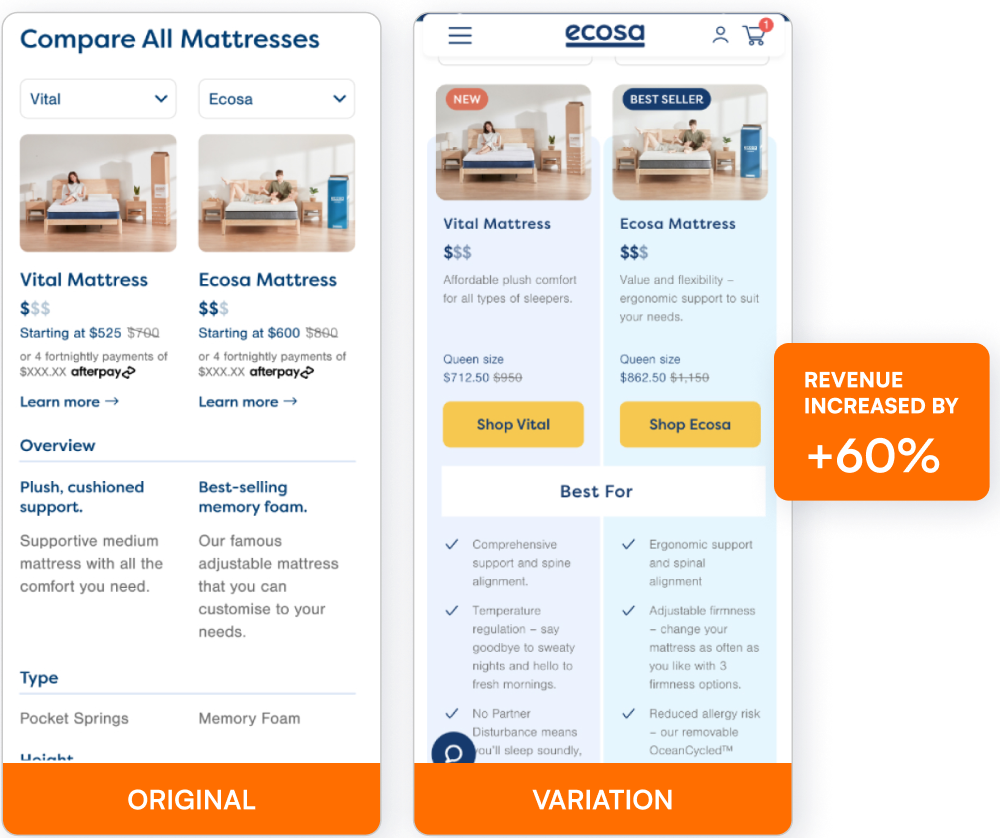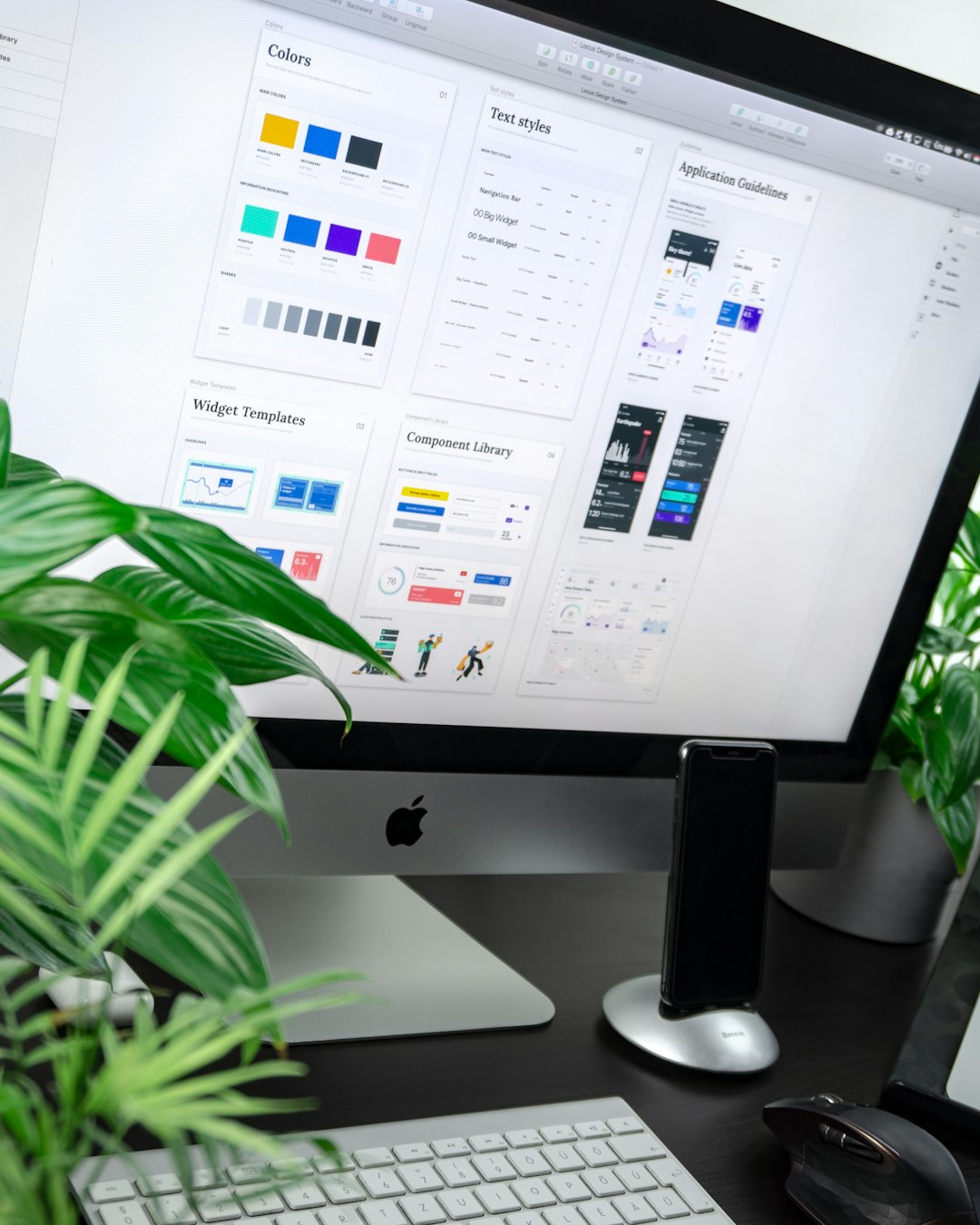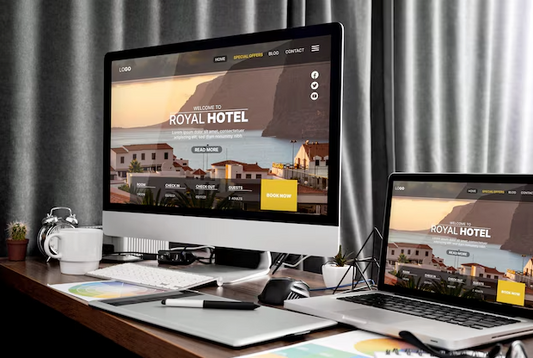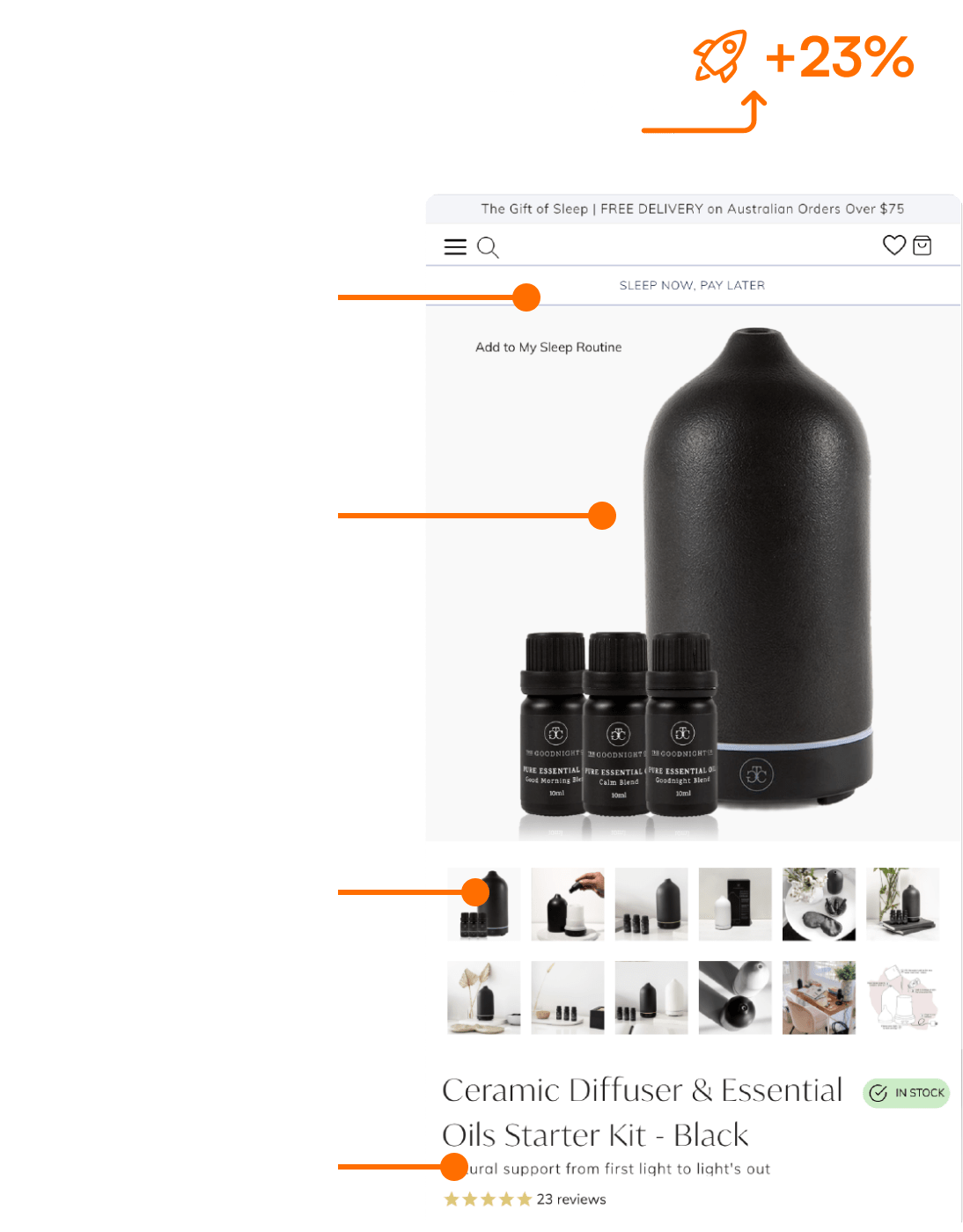Nowadays, with a fast-paced digital environment, attention spans are getting shorter than ever. Thus, the significance of compelling UX/UI design cannot be overstated. At CollectiveObjective.co, our mission revolves around harnessing the power of design to elevate brands and transform customer experiences for the better. UX/UI (User Experience/User Interface) isn't just about aesthetics; it's about creating immersive experiences that resonate with users personally. Studies have shown that 94% of first impressions are design-related—this statistic underscores the critical need for thoughtful design in brand strategy!
Imagine a world where each click, swipe, and interaction serves a functional purpose and tells a cohesive story about your brand. We aim to deliver this through our comprehensive approach, merging Creative Brand Development Sydney and Strategic Branding Sydney into every facet of our design process. We wholeheartedly believe that brand identity in Sydney should be handsomely reflected in UX/UI to enhance overall value and user engagement. In this guide, we will delve deep into the various dimensions of UX/UI design, illustrating how these elements can play an instrumental role in solidifying your brand's presence in an increasingly competitive market.
Our objective is simple yet profound: illuminating how effective UX/UI design can help elevate brand identity while adding tangible value to your offerings. Whether you are part of a startup, a non-profit organization, or an established enterprise, understanding UX/UI design nuances will empower you to create better and more engaging user experiences. So, let's tackle this topic where design meets strategy, paving the way for impactful connections between brands and their audiences that last beyond a mere transaction!
The Foundation of UX/UI Design in Branding
Understanding the Basics of UX/UI Design
Before discussing UX/UI and branding, it is essential to clarify what these terms encompass. User Experience (UX) refers to a person's overall experience when interacting with a digital product, including their perceptions, emotions, and overall satisfaction.
At the same time, User Interface (UI) focuses on the specific elements that allow users to interact with that product, encompassing buttons, icons, spacing, typography, and overall visual layout. Together, these components lay the groundwork for a brand's identity in Sydney, defining how users perceive and engage with a brand's messages and offerings.
Usability plays a crucial role here. Users will quickly lose interest if a product is challenging to navigate or visually unappealing. Research indicates that users often abandon apps or websites if they encounter a poor onboarding experience or consider navigation too complex. Aesthetics—colors, typography, and layout—can evoke emotional responses and reinforce brand values. Investing in UX/UI design allows for a blend of usability and visual appeal, creating value that resonates with users functionally and emotionally.
The implications of effective UX/UI design reach far beyond immediate user satisfaction; they are integral to establishing a solid brand identity in Sydney in a crowded marketplace. Consider well-known brands like Apple and Airbnb: their user interfaces are functional and reflect their core values and brand ethos. For instance, Apple's design emphasizes simplicity and elegance, mirroring its user-centric innovation philosophy. When UX/UI embodies the very essence of a brand, it cultivates essential trust and loyalty—invaluable qualities in today's fiercely competitive landscape. This intrinsic link between UX/UI design and branding cannot be underestimated, as it is foundational to creating meaningful user interactions.
The Role of Creative Brand Development in UX/UI
Creative Brand Development Sydney encapsulates a holistic approach where every interaction a user has with a brand is an opportunity to reinforce its identity. This multifaceted approach goes beyond logos and colour schemes; it involves crafting a cohesive narrative that ties back to the brand's mission and vision. UX/UI design becomes the medium through which this story is told, creating deep emotional engagement that forms lasting connections with users across various touchpoints.
Brands like Nike effectively utilize UX/UI elements to embody their 'Just Do It' philosophy. Their websites and apps deliver intense user experiences that reflect empowerment, motivation, and performance—all critical aspects of their brand identity. Through thoughtful design choices, such as user-friendly navigation and enriched interactive features, they align their UX/UI initiatives closely with their overarching brand storytelling. This reinforces how aesthetics serve a greater purpose in promoting the brand's core values and appealing to its target audiences.
A well-executed UX/UI design should reflect brand aesthetics and functionality, ensuring users connect with the brand throughout their journey. For example, Starbucks enhances user engagement with its app; it offers rewards, personalized experiences, and adventure themes that resonate with coffee enthusiasts while delivering seamless functionality. By weaving the brand's narrative into the user experience, Starbucks elevates its brand identity in Sydney significantly, making users ambassadors of the brand who feel a sense of loyalty and ambassadorship.
Integration of Strategic Branding with UX/UI
Strategic Branding in Sydney emphasizes aligning a brand's long-term vision with its operational practices. UX/UI design plays a vital role in user engagement and brand perception. UX/UI initiatives must quickly reflect your organization's business objectives—whether that means increasing user engagement, elevating brand perception, or driving sales growth. Strategies should cater specifically to target audiences, ensuring that all design elements meet their needs and preferences while retaining brand integrity.
Mailchimp presents a worthy case study; its branding focuses on user experience. The balance they strike between branding and functionality exemplifies how effective UX/UI can transform customer interactions. By leveraging user feedback and employing rigorous testing methodology to ensure an intuitive flow, they have enhanced their platform to provide effortless navigation while maintaining a vibrant and engaging brand personality. This approach reinforces their strategic branding efforts and creates a community of users who cherish the service they provide.
This integration is not merely beneficial—it's essential for brands aspiring to thrive in today's dynamic environment. In an age where consumers expect seamless transitions between online and offline experiences, brands must ensure that their UX/UI strategies align perfectly with their broader branding initiatives. By doing so, they foster enhanced user experiences that drive engagement and satisfaction while reducing friction points, ultimately leading to greater brand loyalty and advocacy from an increasingly vulnerable consumer base.
Specialized Branding Considerations in UX/UI Design
Not-for-Profit Branding and Its UX/UI Challenges
Not-for-profit branding in Sydney faces unique challenges, distinguishing itself in a crowded landscape characterized by a mix of empathy-driven goals. Unlike traditional businesses, non-profits convey messages of advocacy and social impact and often seek funding and support simultaneously to achieve their missions. Effective UX/UI design is crucial for delivering clear messages, enhancing donor relations, and engaging beneficiaries meaningfully.
Creating empathetic UX/UI that resonates with donors and beneficiaries is vital to fostering a sense of community and shared purpose. Compelling storytelling through well-structured and visually appealing experiences can inspire action and volunteerism while encouraging donations. Organizations like Charity: Water exemplify this by employing immersive design strategies that communicate their mission through engaging narratives and visuals, successfully connecting with users emotionally and rationally.
Moreover, the design should prioritize accessibility. Since non-profits cater to diverse populations with varying abilities and access points, creating inclusive UX/UI can significantly increase user engagement, encouraging more people to contribute to the cause. Strategies might include optimizing website navigation for screen readers, ensuring fast-loading pages, and utilizing easy-to-understand language and visuals that open channels for more significant interaction and support, ultimately engaging potential donors meaningfully.
Navigating Cultural Change Branding through UX/UI
In our increasingly interconnected world, Cultural Change Branding Sydney has gained paramount importance as brands navigate diverse cultural landscapes and global user bases that demand inclusivity and relevance. When designing UX/UI, it's essential to consider cultural idioms and preferences, as a user interface appealing to one demographic may alienate or confuse another, leading to missed opportunities for engagement and growth.
To create effective UX/UI in culturally diverse markets, brands must beautifully embrace inclusivity, authenticity, and reflection on community values. For instance, Spotify's personalized playlists reflect users' cultural influences while promoting a global selection of artists. This approach celebrates diversity and enhances user experiences by providing tailored recommendations that resonate with individual identities while advocating for inclusivity among all users—creating a truly personalized experience.
Employing inclusive design principles is vital for effectively navigating cultural sensitivities. Understanding target demographics through comprehensive research and data analysis will help brands adapt their UX/UI accordingly, ensuring users feel valued, recognized, and seen. By acknowledging and embracing their audience's cultural nuances, brands can foster deeper connections with users while reinforcing their commitment to social change and community engagement.
Sustainable Brand Initiatives in UX/UI Design
Consumer demand for Sustainable Brand Initiatives in Sydney has created a pressing need for organizations to showcase their commitment to environmental consciousness and sustainability while embedding these values into their narratives. UX/UI design provides a powerful platform to reflect these corporate values visually and functionally, making sustainability not just a marketing strategy but a core part of the brand identity itself.
Patagonia is a leading example of this integration. The outdoor apparel company embeds sustainability into its UX/UI by promoting repair and recycling options on its website. Its interface guides users toward making informed decisions aligned with the brand's environmental ethos, enhancing the overall user experience. By placing sustainability at the forefront of its design—a key aspect its customers care about—it cultivates a loyal customer base that aligns with its values.
Incorporating sustainability into design principles is not merely a trend; it reflects evolving consumer expectations and concerns about environmental impact. Brands should leverage design choices to spotlight their sustainable practices—using eco-friendly materials in product images, educating users on the impact of their choices, and encouraging environmentally conscious interactions while fostering a community dedicated to sustainability.
Implementing Impactful and Soulful Branding with UX/UI Design
Creating Impactful Branding Solutions through UX/UI
Impactful Branding Solutions in Sydney hinge upon how UX/UI design fosters compelling and memorable interactions. A brand's digital touchpoints should leave an indelible mark on the user, prompting them to engage consistently and meaningfully. A carefully curated interface can subtly nudge users toward desired actions—whether purchasing, signing up for a newsletter, or simply exploring more about the brand.
For instance, Airbnb provides users with intuitive navigation, tailored content, exciting calls to action, and personalized suggestions based on previous interactions, allowing for an engaging brand experience that feels genuinely curated. Understanding user behaviours through analytics enables them to deliver tailored experiences that enhance brand loyalty and advocacy. Such strategic UX/UI choices contribute to the perception that Airbnb isn't just a service; it's a community built around personalized travel experiences.
Utilizing data analytics to track user behaviour and preferences can effectively inform design iterations. Creating user feedback loops allows brands to identify pain points, gather insights, and ensure the site remains relevant to user needs and expectations. The ultimate goal is to create a user journey that enriches the overall experience while reflecting the brand's values, leading to higher engagement rates and deeper customer relationships.
Building Brands with Soul: The Emotional Aspect of UX/UI {#building-brands}
Building Brands With Soul goes beyond the technical elements of UX/UI design and explores the emotional resonance a brand creates through its digital experience. Emotional design encapsulates storytelling, imagery, interactivity, and overall sensory engagements that provoke feelings such as nostalgia, joy, or empathy among users.
For example, Coca-Cola's digital campaigns often emphasize togetherness, happiness, and shared moments. Their UX/UI emphasizes vibrant visuals, interactive elements, and multimedia storytelling that foster strong emotional connections with audiences, promoting brand loyalty that transcends transactional interactions. This sense of belonging is nourishing to the community, as Coca-Cola positions itself not just as a beverage but as an experience that celebrates life's joyful moments.
Effective storytelling within UX/UI involves understanding the user journey and crafting compelling narratives that unfold as users navigate your platform. Incorporate micro-interactions, personalized messages, and visuals echoing brand values to enhance the emotional experience significantly. The deeper the emotional connection with the user, the more likely they will become brand advocates, sharing their positive experiences with others and contributing to organic growth.
Techniques and Tools for Effective UX/UI Design
To successfully implement impactful UX/UI strategies, you must equip yourself with the right tools and methodologies. Various software solutions are available for prototyping and analytics, from user journey mapping tools to A/B testing platforms. Each provides invaluable insights into user interactions and continuously optimizes your design.
Best practices are critical for effective UX/UI design alongside the right tools. Employ user personas to gain insights into target demographics, conduct usability testing to gather relevant feedback, and regularly track evolving design trends to stay ahead of competitors and user expectations. Continuous iterations based on user experience evaluations ensure ongoing improvement while enhancing overall satisfaction.
Moreover, fostering a culture of adaptability within your organization is vital. Invite user feedback and integrate it into the design process actively. Embracing a test-and-learn mindset will enhance your UX/UI, contributing to deeper brand loyalty and prolonged engagement. Ultimately, a commitment to innovation and user-centric design will elevate your offerings and solidify your brand's place in a fast-evolving digital landscape.
Conclusion
The art of UX/UI design is a pivotal pillar for innovative brand development and identity enhancement. Effective design encapsulates aesthetics, functionality, user engagement, and emotional resonance, elevating user experiences across platforms while ensuring brand loyalty. At CollectiveObjective.co, we're not just advocates of good design; we're committed to helping brands navigate these principles, leveraging our extensive expertise to craft thoughtful strategies that resonate deeply with audiences and uplift brand narratives.
Now, I encourage you to evaluate your own UX/UI strategies. Are they reflective of your brand's core values? Are your users truly engaged? What barriers do they encounter on their journey through your platforms? The potential to amplify your brand identity in Sydney is within reach. We invite you to connect with CollectiveObjective.co for expert guidance in refining your UX/UI design and branding solutions. Let's work together to unlock your brand's potential, creating user experiences that attract, inspire, and build lasting relationships!
Beat your competition to it!
Get the latest actionable conversion strategies delivered straight to your inbox!















